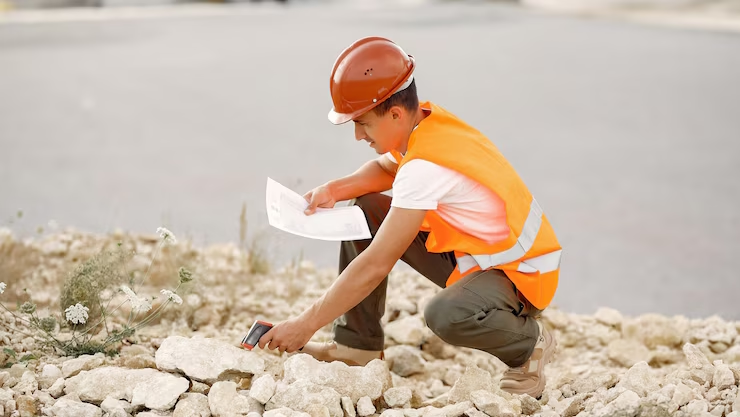Curbs often go unnoticed until they begin to crack, crumble, or shift out of place. Yet, these concrete boundaries play a crucial role in preserving the functionality and visual appeal of our streetscapes. Whether in a residential neighborhood, a commercial district, or an urban roadway, curbs serve to channel water runoff, define property boundaries, and provide a clear separation between pedestrian walkways and vehicular traffic.
When damaged, they don’t just look unsightly—they pose safety risks and can contribute to wider infrastructure problems. For municipalities and property owners alike, maintaining these edges should be a priority, not an afterthought.
Curb repair may seem minor compared to major roadwork, but ignoring it can lead to costly consequences in the long run. We will explore why proactive repair is essential, how professionals approach the process, and how thoughtful curb maintenance contributes to both safety and civic pride in local environments.
More Than Just a Borderline Issue
- Understanding the Impact of Damaged Curbs
When curbs break down, their effects extend beyond visual deterioration. Cracked or sunken curbs can disrupt drainage, leading to standing water that undermines nearby pavement or seeps into foundations. In winter, poorly maintained curbs become catchments for ice buildup, increasing the risk of pedestrian slips or vehicle skids. Uneven curb surfaces also complicate navigation for wheelchairs, strollers, and bikes, making accessibility an issue.
In residential areas, curb damage can subtly lower property appeal and influence homebuyer impressions. In commercial zones, it can lead to liability claims or reduce the professional image of businesses. What’s more, crumbling curbs can accelerate erosion and soil displacement, affecting the surrounding landscape and walkways.
Companies like Native Concrete & Sidewalk address these problems not only through replacement but also by identifying the underlying causes, such as soil movement or poor initial installation. Preventing further damage requires attention to both aesthetics and structural integrity, making curb repair a functional necessity as well as a cosmetic one.
- The Process Behind Professional Curb Repair
Fixing a curb is not a one-size-fits-all operation. It begins with an assessment of the damage—whether the curb has cracked due to freeze-thaw cycles, been chipped by snowplows, or displaced by tree roots. Once the cause is determined, contractors select the proper repair method: patching, resetting, or full replacement.
If patching is an option, it involves chiseling out the loose concrete, applying bonding agents, and filling gaps with durable cement mixtures designed for outdoor resilience. However, more extensive damage usually means cutting away the affected section and pouring a new one to match grade, slope, and curb style.
During replacement, attention is paid to matching existing textures and colors so the repaired section blends naturally with the original. In areas with historical significance, extra care is taken to preserve visual consistency. From mixing ratios to curing time, each step of the process affects long-term performance. Successful repair means durability, improved safety, and restored functionality.
- Curb Appeal and Property Value
It’s easy to associate the term “curb appeal” with landscaping, fresh paint, or decorative mailboxes, but the condition of the actual curb matters too. A clean, well-maintained curb gives a property a finished look, whether it’s a suburban home or a city storefront. Buyers often form opinions within seconds of pulling up to a location, and a broken curb signals neglect, even if the house or building itself is well-kept. In real estate, small external features influence perception more than many owners realize.
Repaired curbs contribute to a property’s overall neatness and reinforce pride in ownership. For business locations, the visual message sent by crumbling sidewalks or jagged curb edges may deter customers before they even reach the front door. Upgraded curbs don’t just improve form—they also improve function, ensuring safe entry and drainage while elevating the appearance of the space. It’s a subtle but powerful tool in maintaining value and visual harmony.
- The Long-Term Value of Preventive Curb Maintenance
Waiting for curbs to deteriorate completely before addressing the issue can lead to far greater expense down the line. Preventive maintenance helps extend the lifespan of adjacent sidewalks, driveways, and landscaping. It also minimizes risk to pedestrians and drivers, reducing liability concerns for property owners or municipalities.
Annual inspections, minor touch-ups, and swift action on new cracks can prevent minor wear from evolving into structural failure. Additionally, repaired curbs are more adaptable for upgrades like ADA-compliant ramps or updated drainage infrastructure. With growing attention to urban design and sustainability, maintaining hardscapes is becoming as crucial as managing green spaces.
In areas with fluctuating climates or heavy foot traffic, scheduled curb maintenance is as essential as routine roofing or HVAC servicing. Long-term thinking around curbs may not always be glamorous, but it’s practical. It safeguards both community infrastructure and the investment property owners make in their surroundings.
Though often overlooked, curbs are one of the most vital structural elements in our neighborhoods and cities. Their job goes beyond marking boundaries—they support water flow, increase pedestrian safety, and uphold the visual standards of our public and private spaces.
Addressing curb damage early prevents broader issues and keeps streets looking clean, accessible, and inviting. Whether in a bustling urban corridor or a quiet residential lane, well-maintained curbs are an essential detail in the larger picture of a community’s infrastructure. Property owners, municipal planners, and local businesses all benefit from timely repair and attention to curb quality.
With support from reliable service providers and a mindset geared toward preservation, curb repair becomes a seamless part of building better, safer environments. Companies such as Native Concrete & Sidewalk demonstrate how careful curb work reinforces community value, combining functionality with long-lasting appeal. As cities grow and age, these concrete edges remain silent but significant pillars of public safety and design.

